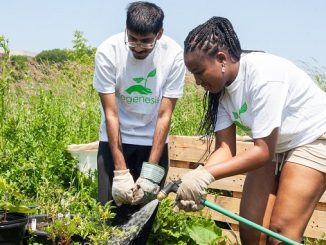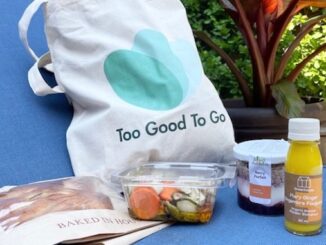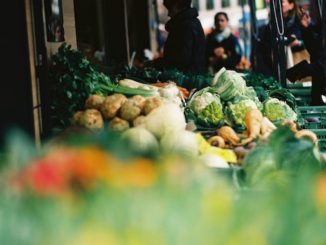According to the Food and Agriculture Organization of the United Nations (FAO) the emissions caused by food waste is almost equivalent to global road transport emissions. At a global scale, households are responsible for 61% of the total food wastage.
In Canada, it is said that 45% of food goes to waste with 79% of that coming from within the food industry – grocery stores, restaurants, etc. This is a huge problem, but a problem that we can solve with proper habits.
So how can we make small changes in our lives to help reduce food waste?
Reduce Shopping waste
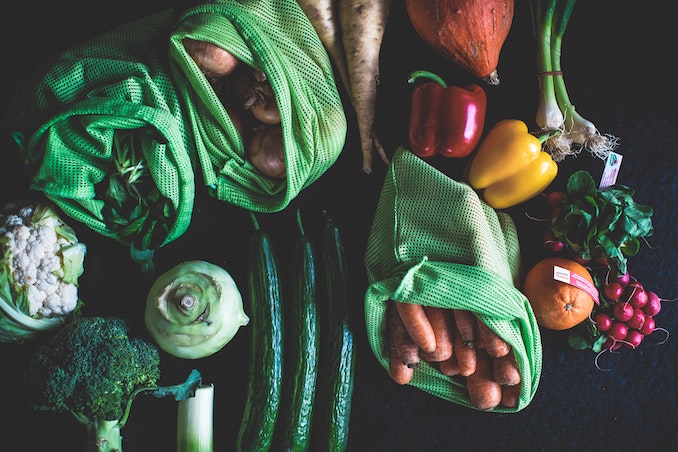
Reducing your food waste starts at the grocery store, or even before. One of the first steps in reducing your waste from food shopping is a meal plan. A meal plan allows you to buy exactly what you need for the week, so you aren’t left with items rotting or going stale. When making a meal plan, be sure to include everything you will need for your meals each week as well as any snack items.
Once you have your meal plan, you are ready to hit up the grocery store. While shopping, be sure to bring your own bags for both the groceries, and any loose items like fruits and vegetables. Grocery stores have started selling both of these types of bags in an effort to help shoppers combat plastic waste.
Now that you are at the store and have your bags ready, it is time to get shopping. While choosing your items, try to buy things that have very little to no packaging. Ideally you want to buy items with no plastic wrapping or any packaging at all if possible. If not possible, try to buy items that have recyclable packaging like paper or cardboard. Pay attention to the packaging labels which often indicate the recyclability of the packaging.
Consider buying the fruits and vegetables with weird shapes, sizes or discolourations. These items are often the last to be picked and the first in landfills.
Food Storage
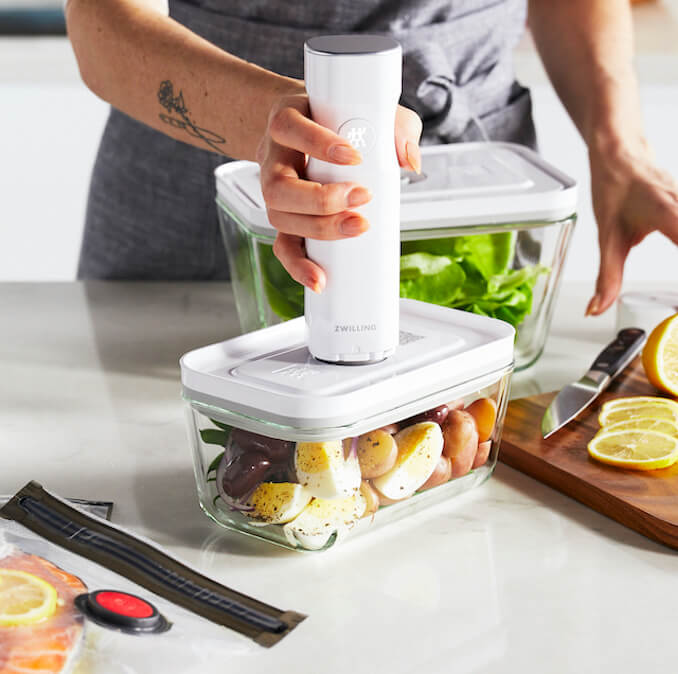
Foods like fruits, vegetables, leftovers or pre made meals can be stored for up to five times longer by using vacuum sealed containers. I currently use the Zwilling Fresh & Save system with containers that can be used for storage in the fridge or freezer as well as being able to withstand oven heat or the microwave for reheating food.
Vacuum sealed storage like this can make it easier for meal planning over a longer period of time to reduce your trips to the grocery store, therefore reducing your waste and saving time.
Making sure food is stored correctly in the fridge or freezer will ensure food stays fresher longer as well. Be sure to look up how to store the foods you buy to maintain their freshness. Keeping fruits and vegetables that give off natural gases as they ripen, making other nearby produce spoil faster, separated is an easy way to ensure their freshness lasts. If you like fruits and vegetable at room temperature, consider freezing them and taking them out ahead of time and let them warm before eating.
Buying from companies who are food waste conscious
When you buy from food waste conscious companies you can also reduce food waste, indirectly.

I recently interviewed David Côté who started a company called LOOP Misson that works with importers / distributors who sell to grocery stores to find ways to reduce this food waste. David found out that one of the companies he works with was throwing away 16 to 25 tons PER DAY of good food. The food is deemed not sellable because of aesthetic reasons and industry standards like bruises or something as simple as too big or too small. Another reason, David tells me, is speculation.
“This is the main reason why there is so much waste. The fact that every consumer is expecting a fully stock shelf of every variety of food possible at all times pushes the industry to always have everything available. Meaning it’s hard to predict how much will be sold every week due to weather, trends, etc. That little extra that every distributor and grocery chain keeps on hand for safety is generating lots of overstock…LOTS.”
LOOP Mission takes these wasted products and produces a wide range of products. Currently those products include juices and smoothies made with perfectly imprefect fruits and vegetables, probiotic sodas made with cold-pressed juice and northern plant hydrosols, a flavourful, nutrient-infused water normally rejected in the making of essential oils. They also have beers made with discarded day-old breads, a gin made with rescued potato cuttings and even soaps crafted with rejected organic sunflower oil and imperfect fruits.
So far, the company has saved almost 7,000 tons of fruits and vegetable, avoided almost 5,500 tons of greenhouse emissions, saved almost 500,000,000 tons of water, and rescued over 1,000,000 slices of bread.
The brand can be found at almost every grocery store across Canada and continues to find new ways to rescue food and reduce waste.
Local food companies like Fresh City, Greenhouse, Eataly, Summerhill Market, Pantry by Food Dudes, and The Healthy Butcher have all signed up to the company Too Good To Go, which offers ‘Surprise Bags’ of surplus food at the end of each day through an app that you can download. There are over 100 local businesses already signed up for the service. Check out our article on the company HERE.
Empire and Second Harvest joined forces in a national partnership to implement the Second Harvest Food Rescue App, partnering with Sobeys, Safeway, IGA, Foodland, FreshCo, Thrifty Foods, and Voilà to enable Empire’s companies to divert food waste and offer more access to fresh, healthy food to Canadian families in need. The app expects to save 31 million pounds of food, and avert approximately 41 million kilograms of GHG emissions annually.
Even larger companies like Nestle Canada are catching on. Because food waste is not only important for the environment and food security, it is also smart business. The confectionery Canadian product Smarties’ packaging will now be made with paper, diverting up to 26 tonnes of plastic from Canadian landfills each year. The company has set a goal of making its packaging recyclable or reusable by 2025 and to reduce its use of virgin plastics by one third in the same period.


